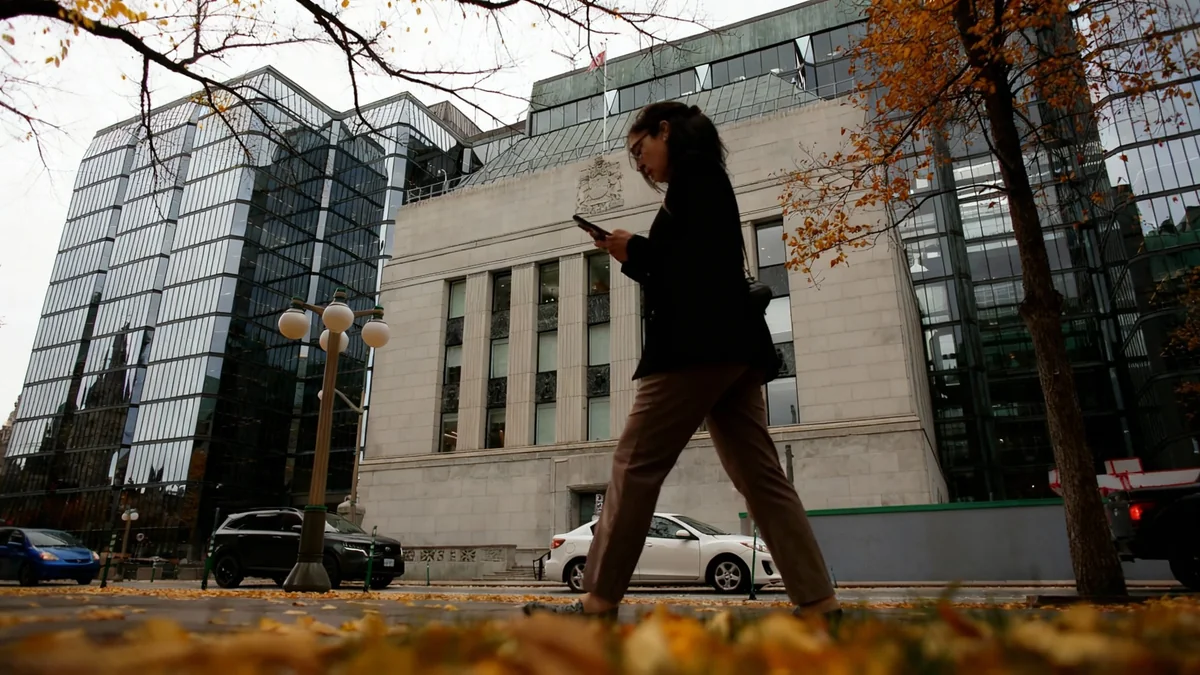The Bank of Canada is set to reduce its workforce by approximately 10%, impacting around 225 employees. This move is part of a broader government initiative to cut expenses and achieve significant budget savings over the coming years.
The central bank's decision aligns with Prime Minister Mark Carney’s push for fiscal restraint across federal departments. These job reductions will unfold over the next few months, with completion expected by June of next year.
Key Takeaways
- Bank of Canada to cut 10% of its workforce, affecting 225 employees.
- Cuts are part of a 10% budget reduction goal by end of 2026.
- Further reductions of 15% are planned for 2026-2028.
- The workforce expanded by 30% since 2019, reaching 2,350 by late 2023.
- Government aims for C$60 billion in savings and 40,000 public service job cuts.
Central Bank Targets 10% Budget Savings
The Bank of Canada has committed to a 10% reduction in its operating budget by the end of 2026. This target necessitates the elimination of a substantial number of positions. The central bank has already implemented various cost-saving measures, including freezing job vacancies and offering early retirement options to employees.
However, these initial steps are not enough to meet the ambitious savings goal. The planned job cuts are a direct response to the need for deeper financial adjustments. Paul Badertscher, a spokesperson for the Bank of Canada, confirmed that reductions are occurring across all departments.
"We will make sure that the bank remains able to deliver on its mandate for Canadians," Badertscher stated in an emailed statement.
Fact Check
The Bank of Canada's employee count grew by approximately 30% between 2019 and 2023, rising from about 1,800 to 2,350 individuals. This growth occurred during and after the COVID-19 pandemic.
Broader Government Fiscal Review
These cuts at the Bank of Canada are not isolated. They are part of a much larger expenditure review initiated by the Canadian government. Finance Minister Francois-Philippe Champagne recently unveiled plans to find C$60 billion in savings over the next five years. This broader strategy includes shrinking the overall size of the public service by roughly 40,000 people.
The government's focus on fiscal responsibility extends across various federal entities. The Privy Council Clerk, Michael Sabia, addressed federal workers in a letter, acknowledging the significant impact these job reductions will have on individuals and their families. He emphasized that achieving the C$60 billion in savings will involve reducing, limiting, or even terminating several government programs.
Long-Term Financial Commitments
Beyond the immediate 10% target, the Bank of Canada has outlined further budget reductions. The central bank aims for a total 15% budget cut between 2026 and 2028. Additionally, it has committed to a 5% reduction in corporate-level expenditures by the end of 2028. These long-term goals underscore a sustained effort to streamline operations and manage costs effectively.
The government's directive for savings comes at a time when the central bank is also taking on new responsibilities. One such new area is the oversight of the Consumer-Driven Banking Act, a new regulatory mandate. The recent budget indicated that the bank might retain additional funds to help finance these new projects, even as it implements widespread cuts elsewhere.
Context: Public Service Growth
The Canadian public service experienced considerable growth in recent years. The overall government workforce expanded to meet the demands of the pandemic and subsequent economic recovery efforts. The current expenditure review seeks to recalibrate the size and scope of government operations to align with fiscal objectives.
Impact on Employees and Operations
The upcoming job cuts will undoubtedly have real consequences for the affected employees. The Bank of Canada has stated its commitment to ensuring that it can still fulfill its core mandate for Canadians despite the reduced workforce. This mandate includes managing monetary policy, issuing currency, and promoting financial system stability.
Departments across the central bank are undergoing scrutiny to identify areas for efficiency and cost reduction. The process of eliminating positions will be carefully managed over the coming months to minimize disruption while achieving the necessary financial targets. The bank's leadership faces the challenge of balancing fiscal prudence with maintaining operational effectiveness.
- The job reduction process is expected to conclude by June of next year.
- Early retirement options were extended to employees as an initial measure.
- Non-salary budgets have already seen reductions.
- Job vacancies have been closed to manage staffing levels.
The government's broader goal of reducing public service jobs by 40,000 indicates a significant shift in federal employment strategy. The Bank of Canada's actions are a direct reflection of this overarching policy direction, aiming to create a more fiscally leaner public sector.





